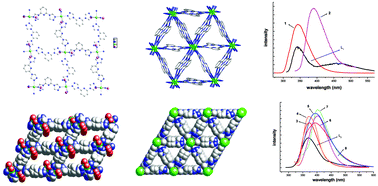Hydrothermal syntheses and characterization of a series of luminescent Cd(ii) frameworks with pyridine-based and benzene-based bis-triazole ligands†
Abstract
Using the

* Corresponding authors
a
Tianjin Key Laboratory of Structure and Performance for Functional Molecule, Tianjin Normal University, Tianjin 300071, P. R. China
E-mail:
qsdingbin@yahoo.com.cn
b Key Laboratory of Inorganic–Organic hybrid Functional Material Chemistry (Tianjin Normal University), Ministry of Education, Tianjin 300071, P. R. China
Using the

 Please wait while we load your content...
Something went wrong. Try again?
Please wait while we load your content...
Something went wrong. Try again?
B. Ding, P. Yang, Y. Y. Liu, Y. Wang and G. X. Du, CrystEngComm, 2013, 15, 2490 DOI: 10.1039/C3CE26998A
To request permission to reproduce material from this article, please go to the Copyright Clearance Center request page.
If you are an author contributing to an RSC publication, you do not need to request permission provided correct acknowledgement is given.
If you are the author of this article, you do not need to request permission to reproduce figures and diagrams provided correct acknowledgement is given. If you want to reproduce the whole article in a third-party publication (excluding your thesis/dissertation for which permission is not required) please go to the Copyright Clearance Center request page.
Read more about how to correctly acknowledge RSC content.
 Fetching data from CrossRef.
Fetching data from CrossRef.
This may take some time to load.
Loading related content
